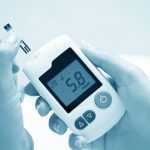What is Design Verification?
Design Verification is a critical step in the design control process, ensuring that design outputs meet the established design inputs.
What is Design Validation?
Design validation is the process of providing objective evidence that a device meets user needs and intended uses.
 Figure 1: Design and Development Process of Medical Device
Figure 1: Design and Development Process of Medical Device
The U.S. FDA has specific requirements for design verification and design validation activities, primarily detailed in 21 CFR Part 820, which covers the Quality System Regulation (QSR) for medical devices.
FDA Requirements for Design Verification and Design Validation:
General Requirements for Design Verification and Design Validation:
- Change Control: Any design changes must be verified and validated to ensure they continue to meet design inputs and user needs.
- Risk Mitigation: Effective design verification and design validation helps in identifying and addressing potential issues early in the development process, reducing the risk of product failure, product performance, safety issues, or non-compliance with standards.
Specific Requirements for Design Verification:
- Objective: The primary objective of design verification is to confirm that the design outputs (i.e., the specifications, prototypes, or finished products) meet the design inputs (i.e., the requirements, needs, or constraints) that were established at the beginning of the design process.
- Process: During verification, the product development team performs various tests, inspections, or analyses to ensure that the product or system meets all the predefined requirements. This can include functional testing, performance testing, and reviewing design documentation.
- Documentation: Verification activities are meticulously documented to provide evidence that the design outputs align with the design inputs. This documentation can include test reports, inspection records, and analysis results.
- Feedback Loop: If discrepancies are found between the design outputs and inputs during verification, it often leads to a redesign or adjustment of the design. This feedback loop helps in refining the product to ensure it fully meets the specified requirements.
- Regulatory Reference and Compliance: 21 CFR 820.30 (f). Regulatory Bodies like the FDA or FAA require detailed verification to ensure that the devices are safe and effective.
Specific Requirements for Design Validation:
- Objective: To confirm that the device meets user needs and intended uses by demonstrating that its specifications align with these requirements.
- Timing: It must be completed before the device is commercially distributed to ensure it is ready for market and complies with all necessary criteria for safe and effective use.
- Process: It involves real-world testing or simulations to evaluate the device’s performance and collect evidence that it meets user requirements.
- Documentation: It requires detailed records of validation activities, including test protocols, user feedback, and performance data analysis.
- Regulatory Reference and Compliance: 21 CFR 820.30 (g). Regulatory bodies (e.g., FDA) require detailed validation for ensuring adherence to safety and efficacy standards before a device can be marketed.
To successfully enter the US market with their devices, manufacturers must comply with FDA requirements. For expert regulatory guidance, we recommend reaching out to the experienced team at MakroCare. Keeping up-to-date with regulations is vital for compliance.


